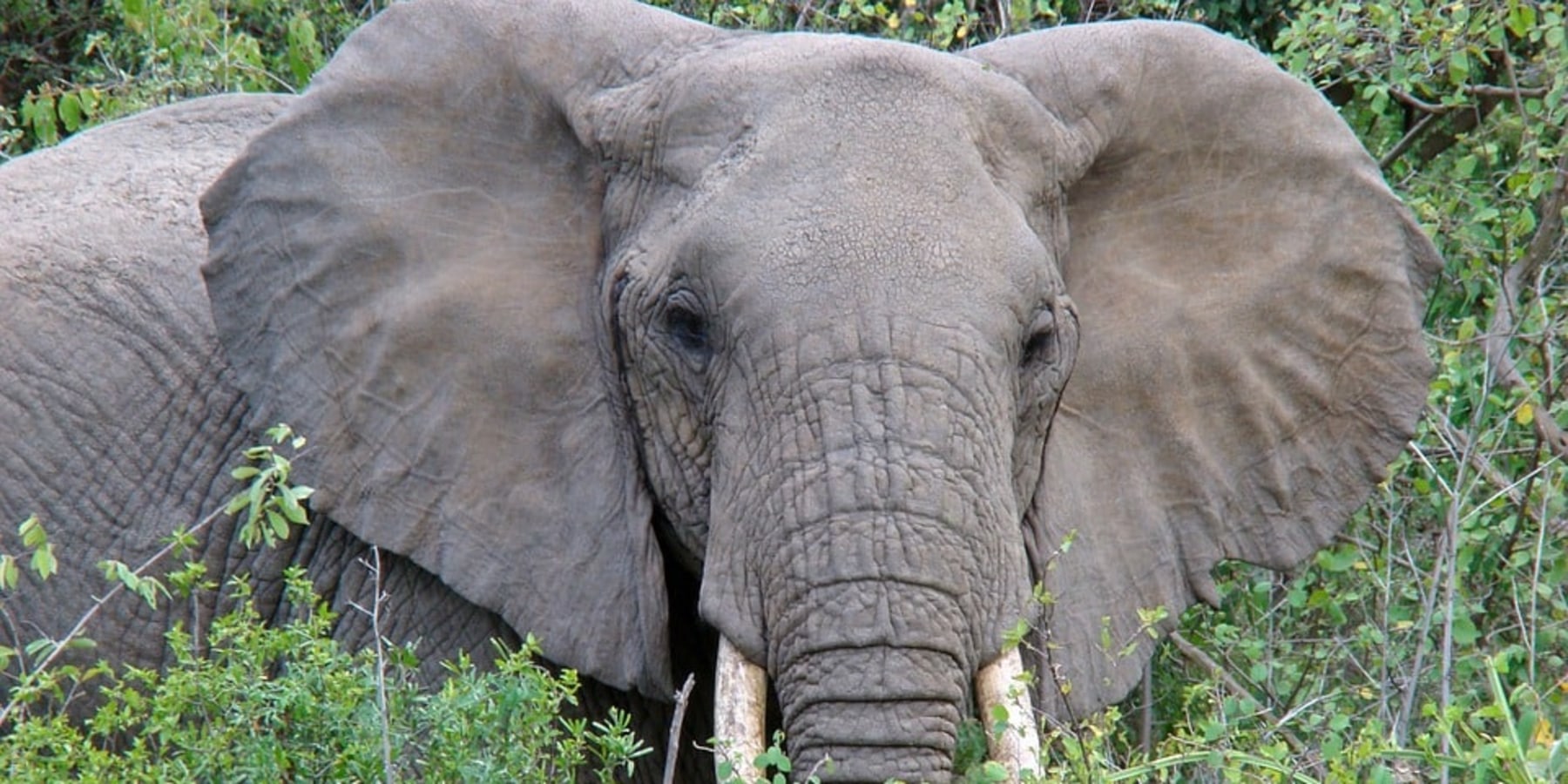
The African Elephant is the Largest Land Mammal in the World. The Scientific name for this Animal is Loxodonta Africana. These large mammals can weigh up to 7000 kgs or seven tons at adulthood, especially the male elephant. They are found in most parts of Africa , especially in Sub Saharan region.
Over time, the population of this species has dwindled due to poaching activities. This animal is poached for its ivory tusks, which are considered to be of high value and sold in black markets around the world. The skin of this animal is more than 2.5 cms thick. Females have an average weight of 2000 to 3500 kgs and males weigh an average of 4,000 to 6000kg in the wild. The average length of the tail is 1 to 1.5 metres.
Elephants have poor eye sight ,excellent hearing, and a keen sense of smell .In the wild, they can reach up to the ripe age of 70 years. There habitat includes savannah, grasslands, woodland, and forests, where there is plentiful supply of forage and water. These mammals spend more than 15 hours a day feeding, drinking, dusting themselves with fine soil, and wallowing in mud during hot days. They need about 50 to 100 liters of water a day ,and need to eat 200 to 300 kgs of food per day in order to survive.
Elephants normally live in large herds led by an older female. The male of this species are known to be mostly solitary, especially the old bulls. An elephant herd has a complex ,hierarchical social structure based on age, made up of 10 to 20 closely related individuals, and consist of a matriarch leader.
Elephants mourn their dead by remaining close to them for several days, covering them with twigs, dirt, branches, and leaves, touching whatever remains with the tips of their trunks. They are diurnal and nocturnal, which means they can see both in the day and night.
Elephants use a variety of vocalization, visual signals, bodily postures, and their trunks to communicate with each other, especially their offspring; a type of infrasonic communication that has a low frequency not audible to human ears.
Female elephants give birth to their first born upon attaining 10 to 20 years of age, and hereafter every 4 to 6 years. The gestation period is 22 months, with female giving birth to a single calf. In rare instances, elephant have been known to give birth to twins. The calves are able to walk within 2 to 3 hours after birth, and breastfeed until they are 4 to 6 years old. Their tusks appear externally when they are 30 month old.
The African elephants are larger than the Asian elephants. While the latter can be easily trained and domesticated for circus appearances and farming, there African counterpart are mostly wild, and can not be easily trained and domesticated. Another part that distinguishes these two species is the fact that the ears of African elephants are larger than Asian elephants, growing up to 1.8 meters.
Irrespective of species, all elephants are excellent swimmers. There trunks can be used for breathing, smelling, communicating, gathering food, sucking water, and lifting objects.
African elephants are easily seen in most parks across Tanzania. We have sixteen National Parks. The best ones are: Tarangire National Park, Ruaha, Selous, Serengeti National Park, Manyara, Arusha National Park, and Kilimanjaro National Park. Tarangire National park in The Northern Circuit is Famous for its large herds of elephants. In the Southern Circuit, Selous and Ruaha Parks are known for there abundant elephant population.
In Tanzania, people have a higher chance of sighting the 'Big Five' as well as other animals and bird life in their natural habitat, surrounded by fascinating landscapes and different varieties of flora and fauna.
We welcome you all to Tanzania, the land of Kilimanjaro and Zanzibar.

